Note: The following text was originally posted on my X/Twitter account.
An unknown percentage of Russia's propeller-driven Gerbera decoy drones are employed in an armed configuration that entails the installation of a very modest—almost token—warhead. The Gerbera's design is very much limited in terms of range-payload and is, in practice, limited to carrying a 1-3 kilogram-class warhead when employed in a necessarily reduced range configuration. Russia's Shahed-136/Geran-2/Garpiya strike drones, in contrast, are typically equipped with either a 50-kilogram or 90-kilogram-class warhead, the latter being the reduced-range configuration that trades range for payload.
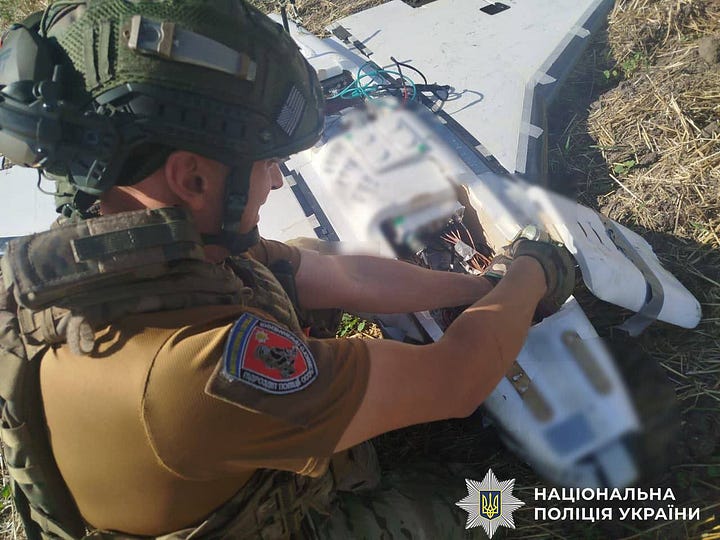
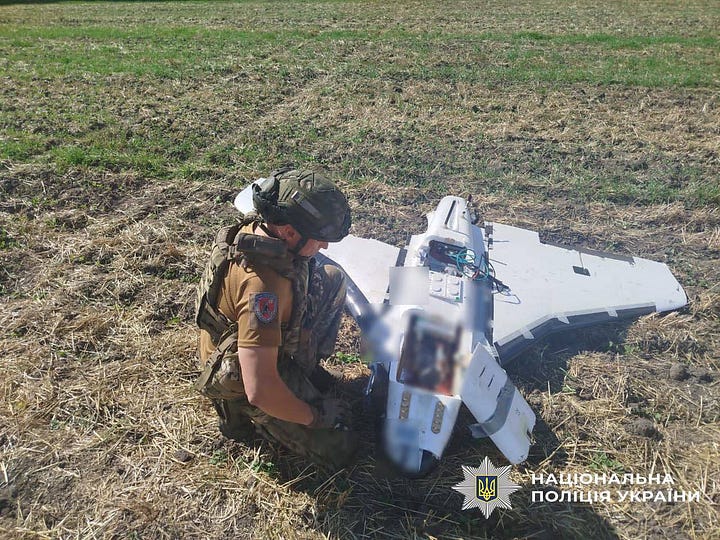


Given how far Gerbera decoy drones have been observed from the international border/frontlines, only a subset of Russia's Gerbera decoy drones appear to be employed in an armed configuration. Measure-countermeasure dynamics and the nature of Gerbera's design incentivize Russia to employ this propeller-driven decoy drone design in both armed and unarmed configurations. Unfortunately for observers of the Russia-Ukraine War, the Ukrainian Air Force's daily disclosures do not disaggregate/distinguish launches and claimed interceptions of Gerbera decoy drones from launches and claimed interceptions of Shahed-136/Geran-2/Garpiya strike drones. Observers currently have no publicly available estimate of the percentage of Gerbera decoy drones that are employed in an armed configuration, irrespective of the very limited destructive effects and destructive radius of such a small and light warhead. It is important to note that the installation of a warhead is not the only source of variance in Russia's employment of the Gerbera decoy drone design. Russia is known to employ the Gerbera in at least one configuration in which the small decoy drone is equipped with an electro-optical sensor and a datalink. It is also possible, even likely, that different "versions" of the Gerbera are equipped with different CRPA GNSS antenna arrays of varying cost and EW resilience so as to serve very different functions in Russian strike planning.
Background:
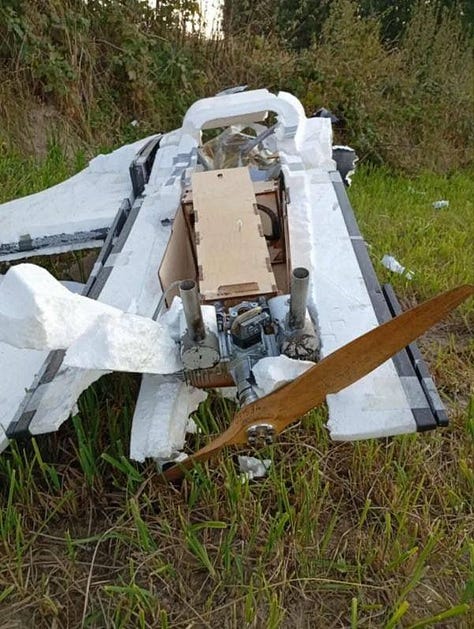
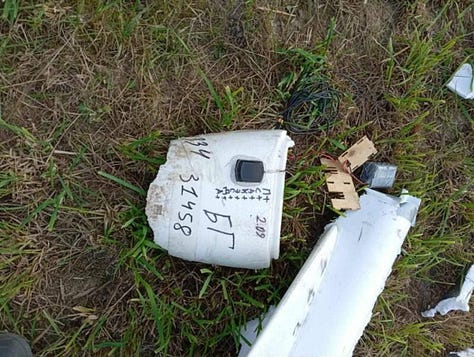
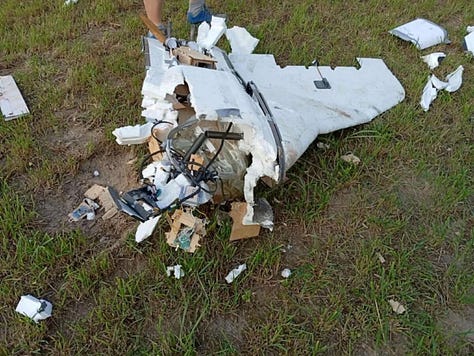
Images and a video of two different downed Russian propeller-driven Gerbera decoy drones—the images are notably from a Gerbera that crashed in Poland. The Gebera decoy drone is made of plywood and foam—refer to the images—and appears to be primarily employed in an unarmed configuration. While it can serve in the role of an imperfect visual and acoustic decoy of the significantly larger and much heavier Shahed-136/Geran-2/Garpiya strike drone, the Gerbera's design is very much limited in terms of range-payload and is, in practice, limited to carrying a very modest—almost token—warhead in the 1-3 kilogram class when employed in a necessarily reduced range configuration. Russia's Shahed-136/Geran-2/Garpiya strike drones, in contrast, are typically equipped with either a 50-kilogram or 90-kilogram-class warhead, the latter being the reduced-range configuration that trades range for payload. When employed in the unarmed configuration and once out of fuel, the Gebera is a functionally inert projectile that will not detonate or combust upon impact with the ground, a dynamic that can be seen in these images and the video in particular. It is important to note that measure-countermeasure dynamics now incentivize Russia to arm the Gebera when possible, no matter how limited the destructive effects/radius of such a small and light warhead. I elaborated on this dynamic in a recent post.

